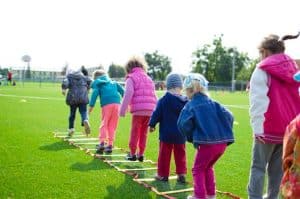Cultural Competency: Preparing Teachers for Diverse Classrooms
Welcome to the 21st century, where diversity is the norm. As classrooms become increasingly diverse, the need for teachers to be equipped with the knowledge and skills of cultural competency has become vital. Cultural competency is the ability to understand, appreciate, and interact effectively with people from different cultural backgrounds. In a culturally diverse classroom, this means ensuring that all students feel valued, respected, and represented. Yet, with this growing emphasis on cultural competency, many teachers are left wondering: how can I effectively prepare myself to meet the needs of my diverse classroom? In this article, we will explore the importance of cultural competency in the classroom and how teachers can develop and improve their cultural competency skills. So let’s dive in!
The Importance of Cultural Competency in the Classroom
Cultural competency is not just a buzzword or a trend; it is a necessary skill for all teachers to have. In today’s diverse classrooms, teachers must be able to understand and accommodate the cultural backgrounds and experiences of their students. By doing so, teachers can create a safe and inclusive learning environment where all students feel comfortable and supported. This not only contributes to the academic success of students but also fosters a positive learning experience for all.
Enhances Communication and Understanding
One of the key benefits of cultural competency in the classroom is improved communication and understanding. With a diverse group of students, teachers may encounter language barriers, cultural differences, and communication styles that vary from student to student. By understanding and being culturally competent, teachers can bridge these gaps and effectively communicate with their students. This, in turn, enhances students’ understanding of classroom material and promotes their academic success.
Promotes Inclusivity and Empathy
The importance of inclusivity in the classroom cannot be overstated. Every student deserves to feel welcomed and valued, regardless of their cultural background. By being culturally competent, teachers can create a classroom that celebrates diversity and promotes inclusivity. This not only benefits the students, but it also fosters empathy and understanding among classmates. In a culturally competent classroom, students learn to appreciate and respect one another, which can lead to a more positive and supportive learning environment.
Developing Cultural Competency as a Teacher
Now that we have established the importance of cultural competency, the next question is: how can teachers develop and improve their cultural competency skills? Here are some practical tips:
1. Educate Yourself
The first step in becoming culturally competent is to educate yourself. Take the time to learn about different cultures, their values, beliefs, and customs. Attend cultural events or workshops that will help you gain a deeper understanding and appreciation for the diverse backgrounds of your students. This will not only make you a better teacher but also show your students that you value and respect their culture.
2. Create a Culturally Responsive Curriculum
As a teacher, you have the power to shape your curriculum to be culturally responsive. Incorporate diverse perspectives, histories, and experiences into your lessons. This not only reflects the diverse identities of your students but also encourages them to see themselves in the materials they are learning. A culturally responsive curriculum can also promote critical thinking and understanding of different cultures.
3. Practice Active Listening
Active listening is a crucial skill for teachers to have, especially when it comes to understanding their students and their cultural backgrounds. Take the time to listen to your students and learn about their experiences. This will not only help you understand their perspectives but also build trust and rapport with your students.
4. Engage in Self-Reflection
Lastly, it is important for teachers to engage in self-reflection. Reflect on your own biases and how they may impact your interactions with students from diverse backgrounds. Being aware of your biases allows you to actively work towards being more inclusive and culturally competent in your classroom.
Conclusion
Cultural competency is a necessary skill for all teachers in today’s diverse classrooms. It promotes inclusivity, understanding, and empathy among students and creates a positive learning environment for all. By educating themselves, creating a culturally responsive curriculum, practicing active listening, and engaging in self-reflection, teachers can continuously develop and improve their cultural competency skills. As we strive for a more inclusive and equitable society, it is crucial for teachers to embrace cultural competency and prepare themselves to meet the needs of their diverse classrooms.




